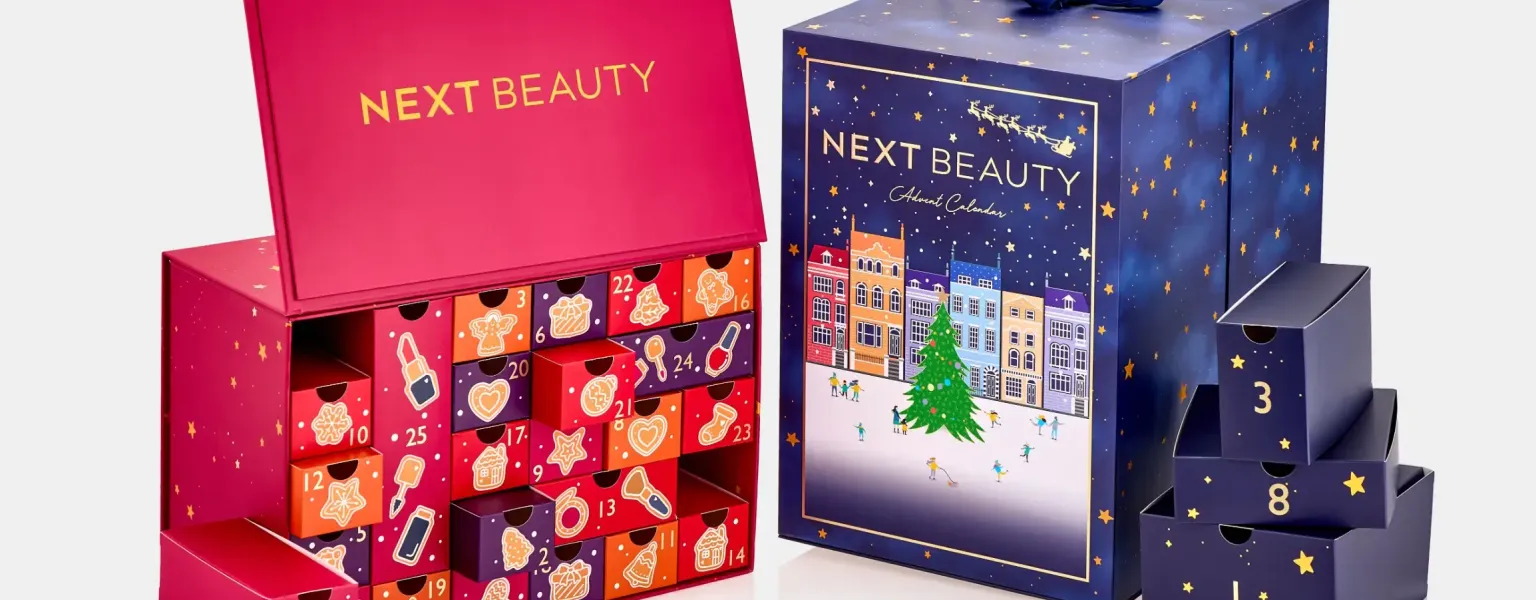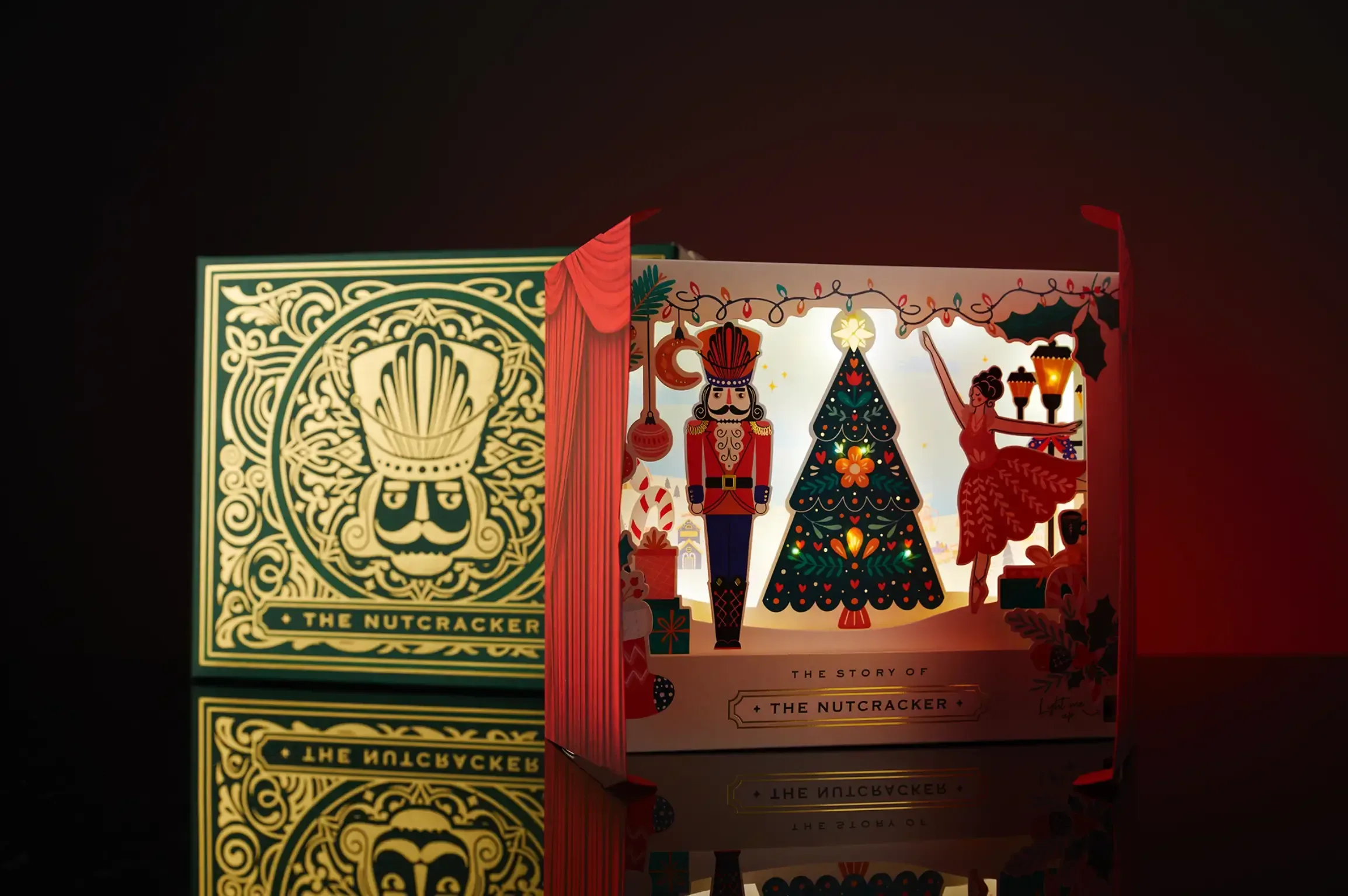Festive packaging design in focus at London Packaging Week

Events
Designing wonder: How brands bring festive packaging to life
From handcrafted textures to playful innovations, festive packaging is evolving into a careful balance of nostalgia, novelty and strategy, an evolution explored in depth at London Packaging Week.
As the year draws to a close, festive packaging awakens. It is a season where every ribbon, every embossed pattern, and every shimmer of metallic foil carries the promise of delight, and the delicate weight of expectation. Crafting the perfect holiday experience is no longer just about vibrant reds and familiar greens; it’s about balancing nostalgia with novelty, playfulness with sophistication, and cultural sensitivity with universal joy.

From whimsical shapes that transform everyday products into magical gifts, to tactile, hand-crafted textures that evoke warmth and comfort, brands are exploring a landscape where creativity and strategy intertwine. Inclusivity, sustainability, and technology now sit alongside tradition as guiding stars, ensuring that every advent calendar, confectionery box, or seasonal gift set feels both enchanting and meaningful. This evolving craft is at the heart of discussions and showcases at London Packaging Week, where industry leaders come together to explore the latest innovations, trends, and techniques. In this world, the art of festive packaging is a careful choreography: to surprise, delight, and invite the consumer into a moment that feels timeless, yet entirely of the now.
Long before the first snow falls or the scent of mulled wine drifts through the air, the magic of festive packaging begins to take shape. For many brands, this work doesn’t happen overnight. The process often starts 12 to 18 months in advance, a meticulous rhythm of trend audits, sketches, prototypes, and strategic refinement that gradually evolves into the seasonal offerings that eventually grace store shelves. This early groundwork allows designers to anticipate consumer moods, explore emerging aesthetics, and create concepts that balance innovation with the comforting familiarity expected during the holidays. As Claire Hoe, Design Director at Sun Branding, observes, “I think it’s becoming more and more about people wanting to craft again. There’s also the advantage of being money-conscious and actually able to make things yourself.”
Yet capturing that seasonal magic is no straightforward task. The landscape has shifted in recent years; the impact of traditional TV advertising, once the cornerstone for iconic campaigns from retailers like John Lewis and Marks & Spencer, has softened. “Some of them have got it wrong,” Claire notes. “Being sensitive to what’s happening while still delivering a positive message is really hard to get right.” In an era of uncertainty, attempts to create a “big Christmas” can feel discordant if the audience is not in the headspace for celebration. Seasonal packaging must walk a fine line between spectacle and sensitivity, creating delight without overwhelming, and excitement without appearing tone-deaf.
Lisa Cain, European Technical Account Manager - Pan European Sales - Food, Confectionery, Premium Drinks, reinforces this point: “Consumers want genuine warmth. We’re seeing more hand-drawn graphics, imperfect lines, and packaging that looks boutique. Not everyone’s knitting their own gift tags, but there’s a craving for designs that feel like someone thought about it. Done right, this aesthetic gives mass-market packs a shot of intimacy.”
Balancing tradition and innovation
This careful balancing act manifests across campaigns, from early Halloween launches to Christmas itself. In the US, Halloween ranges now appear as early as June, a momentum that seamlessly carries through to the festive season. Claire Hoe explains, “Seasonal packaging is huge, both in look and feel, and offers opportunities for unexpected formats, playful approaches, and giftable products.” The opportunity for creativity is further heightened by technology, which allows brands to integrate playful, interactive, or limited-edition elements in ways that feel novel yet still aligned with the brand’s core identity. Christmas, she notes, “is an opportunity to create playful, limited-edition departures from the usual brand identity. At the same time, there’s still a demand for traditional themes, especially in retail.”

Steve Parkhouse, Key Account Director at Curtis Packaging, elaborates on how this interplay between tradition and innovation shapes the industry. “We’re seeing bold colours, simplified designs, and patterned graphics feature strongly, creating a handcrafted yet festive look. Material choices vary; some brands favour a crafty, uncoated feel, while others incorporate subtle metallics or sparkles to add seasonal cheer without losing the artisanal appeal.” Beyond aesthetics, strategic considerations are key: “Traditional Christmas snowflakes and similar stereotypical elements are being replaced by more subtle branding devices to firstly not call out ‘Christmas’ too much, but also to facilitate ‘all year round’ gifting sales, so it’s not a case of fire sale at the end of the ‘season’.” Packaging today must simultaneously signal festivity, reinforce brand values, and serve practical commercial objectives, from extending the selling window to supporting e-commerce and DTC channels.
Lisa Cain adds, “The brands that get it right are the ones that read the room. You can still be bold without being tone-deaf. The most memorable campaigns balance joy with relevance, acknowledging global context, local pressures, and cultural nuance. The brands that ignore this, or default to cliché, often land somewhere between forgettable and off-key. Big Christmas still works, but only when the heart of the message hits home.”
The fusion of creativity and strategy is particularly visible in beauty gifting and confectionery. Jane Struk, Creative Director at ARD Agency London, highlights the trend toward premiumisation: “People want gifts to feel more special, more customised, with a richer experience. That could be through the structure of the packaging or the unboxing experience… the ‘wow effect’ is always required from brands, and every year we have to raise the bar.” Advent calendars exemplify this evolution: preorders now begin in summer, and brands are expected to deliver experiences that feel unique and luxurious, often incorporating unexpected shapes, intricate patterns, or even interactive elements. The design becomes a narrative, with each product telling part of a story and inviting the consumer to participate in the ritual of gifting and anticipation.
Yet strategy and brand personality guide creative freedom. Jane continues, “Every brand has its own personality, and gifting should grow naturally from that. The aim is to surprise and delight without diluting brand identity.” Even subtle interventions - a wrapper cut into a playful edge, a small colour accent, or an inventive pattern - can transform a product from ordinary to celebratory, invoking nostalgia, joy, and the warmth of seasonal rituals. It is this nuanced layering that separates functional packaging from something truly memorable.
Lisa Cain underlines the value of adaptability here: “You can’t predict the mood six months ahead, but you can plan for change by designing in layers and building in details that can carry from autumn through to New Year. Modular formats, sleeve systems, and time-release drops give brands room to adapt without losing the thread. Staying relevant means designing for movement, not just for the moment.”
The art of festive storytelling
Hunter Luxury adds another dimension, focusing on foresight, creativity, and the balance between consistency and innovation. “To design for Christmas 2027 is to embrace strategic foresight, blending creativity with discipline. The packaging of the future must tap into consumer behaviour and become part of the experience itself – a tactile, beautiful, meaningful extension of the brand story,” Paul Hamilton, Head of Sales & Marketing at Hunter Luxury, explains. This perspective translates directly to seasonal design: the most compelling festive packaging combines familiarity with a touch of the unexpected, striking a balance between brand continuity and originality.

This pursuit of originality is not without tension. “No longer can brands afford to iterate again and again to react to any shift in the market. Instead, the focus must be on getting things right the first time, aligning every detail from concept to production with the rhythms of the global supply chain,” Hamilton notes. Designing for a Christmas yet to come requires anticipating the tastes and expectations of consumers who do not yet exist. The best festive packaging achieves this by being both coherent and playfully reinterpretive each season, delivering delight while maintaining consistency and technical precision.
Meeting these ambitions demands innovation beyond narrative or visual design. Functional and technical advancements, for example, allow packaging to enhance consumer experience while remaining practical. “One of the most exciting trends this year is innovating traditional packaging formats to enhance functionality and DTC readiness… allowing DTC channels to ship products safely while maintaining the festive experience. We’re also evolving rigid-box replacements to be quicker to form, more robust, and better suited as carton alternatives,” Steve Parkhouse explains. Sustainability intersects with these innovations, enabling brands to reduce resource-intensive materials while retaining premium finishes, often through eco-friendly coatings that add sparkle and festivity without environmental compromise.
Alongside functional innovation, handcraft and nostalgia remain central. “Nostalgia, homeliness, and comfort are extremely important in festive packaging. Adding a playful twist through subtle patterning, colour accents, or foiling can enrich the festivity without undermining the brand’s personality,” Steve observes. Crocheted or knitted elements, tactile materials, and warm colour palettes evoke a sense of homeliness, complementing the excitement of gifting. The packaging is not only visually appealing but emotionally resonant, offering consumers a connection to both personal and cultural memories of the holidays.
Lisa Cain echoes this, noting, “There’s still plenty of red and gold on shelf, but more brands are ready to disrupt. Pop-ups, pull-tabs, nested reveals, and chaos packaging – anything that turns a pack into a bit of theatre is fair game. Consumers want an experience, not just a box. Tradition might set the tone, but it doesn’t dictate the shape, and some of the best packs this year twist the familiar into something new.”
Even the products themselves increasingly reflect the festive story. Matalan’s pumpkin-shaped glasses or novelty food items crafted into tree shapes illustrate how the seasonal transformation extends beyond packaging. Cracker-style cartons, hanging baubles, and other structural innovations make the product feel giftable and special without altering its core identity. This expansion of creativity, from packaging to product form, underscores the idea that every touchpoint is a chance to delight, engage, and evoke wonder.
This multifaceted approach, where craft, narrative, and strategy converge, is mirrored across categories. In confectionery, FMCG brands must often tread carefully to maintain heritage and consumer expectations. Cosmetics, in contrast, can embrace eccentricity more freely, experimenting with vibrant colour palettes, bold graphics, and reusable packaging that doubles as decoration. “It’s much more than two directions; it’s a whole world,” Jane notes. Each campaign is an opportunity to innovate, surprise, and elevate the brand experience, whether through bold visuals or subtle cues that deepen consumer attachment.
The art of festive packaging is ultimately an exercise in anticipation, patience, and precision. Months of research, creative exploration, and collaborative iteration culminate in products that are beautiful, functional, and emotionally resonant. Every decision, from colour to texture, from narrative to structure, is a deliberate step towards a carefully orchestrated consumer experience. It is not a process of instant magic but of slow, attentive preparation, where every layer of detail builds toward the cumulative effect of delight, nostalgia, and celebration.
By the time the first products appear on shelves, months of strategic foresight, creative experimentation, and technical refinement have already passed. The final result - a limited-edition advent calendar, a hand-crafted bauble, or an inventive confectionery wrapper - carries the weight of this invisible labour. It is a reminder that the holidays are more than a date on the calendar; they are a carefully cultivated experience, designed to resonate, charm, and endure. Achieving this delicate alchemy is both an art and a science, a combination of craft, creativity, and insight that transforms packaging from a mere container into a conduit for joy. These conversations will come to life when the industry gathers at London Packaging Week on 15 & 16 October at Excel London.
Related News
-
Events
One month to go: London Packaging Week returns to Excel London
-
Business
Designing for emotion: The next era of consumer packaging
-
Events
Big-name brands set to turn out for London Packaging Week 2025
-
Events
The final countdown: 50 days to go until London’s premier packaging event
-
Events
London Packaging Week unveils powerhouse content programme




